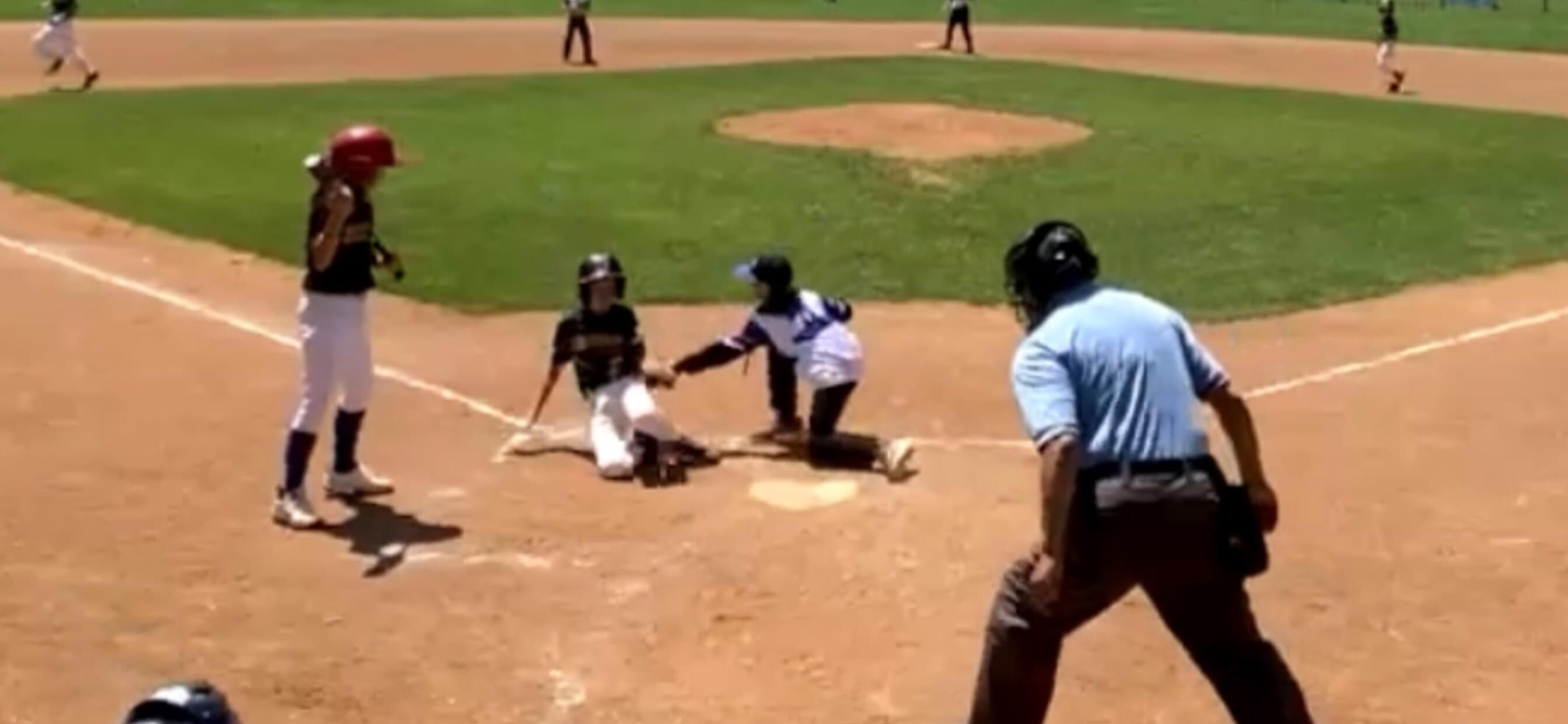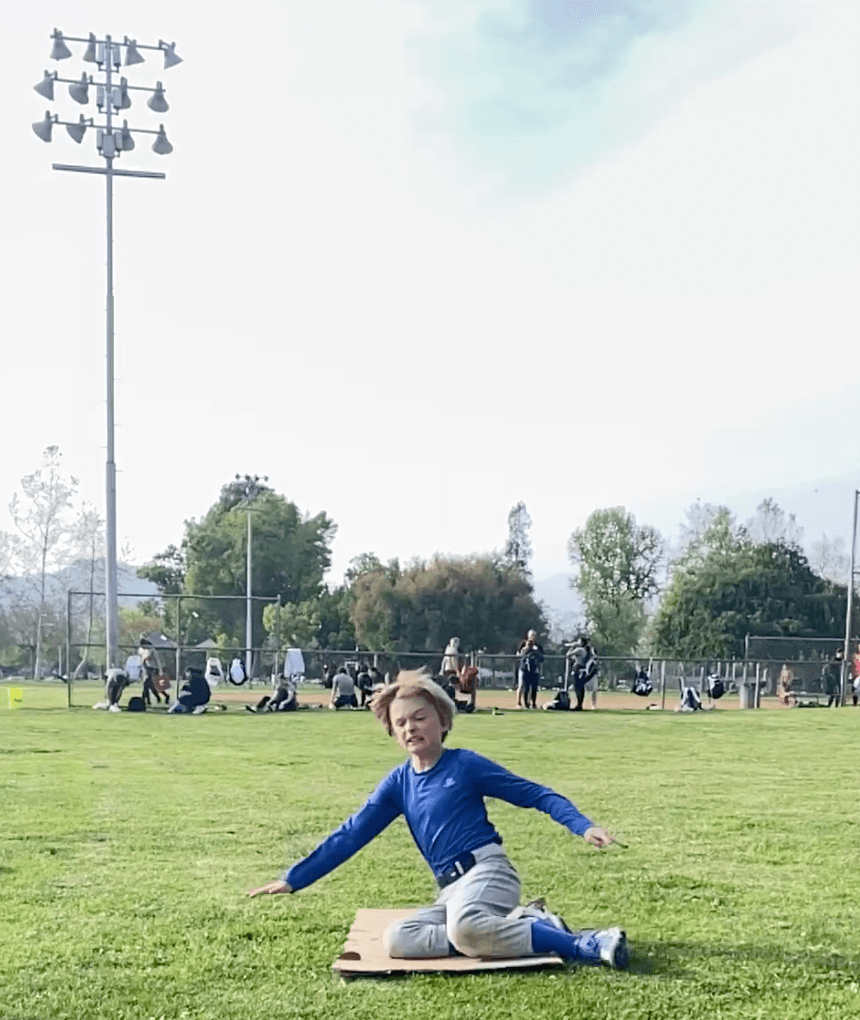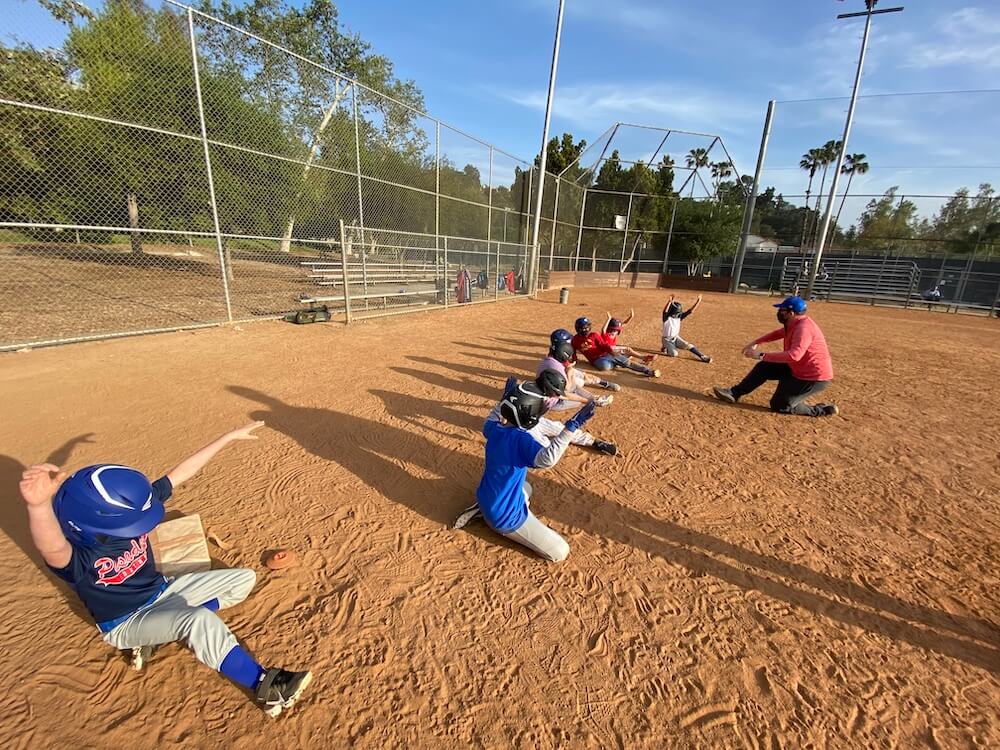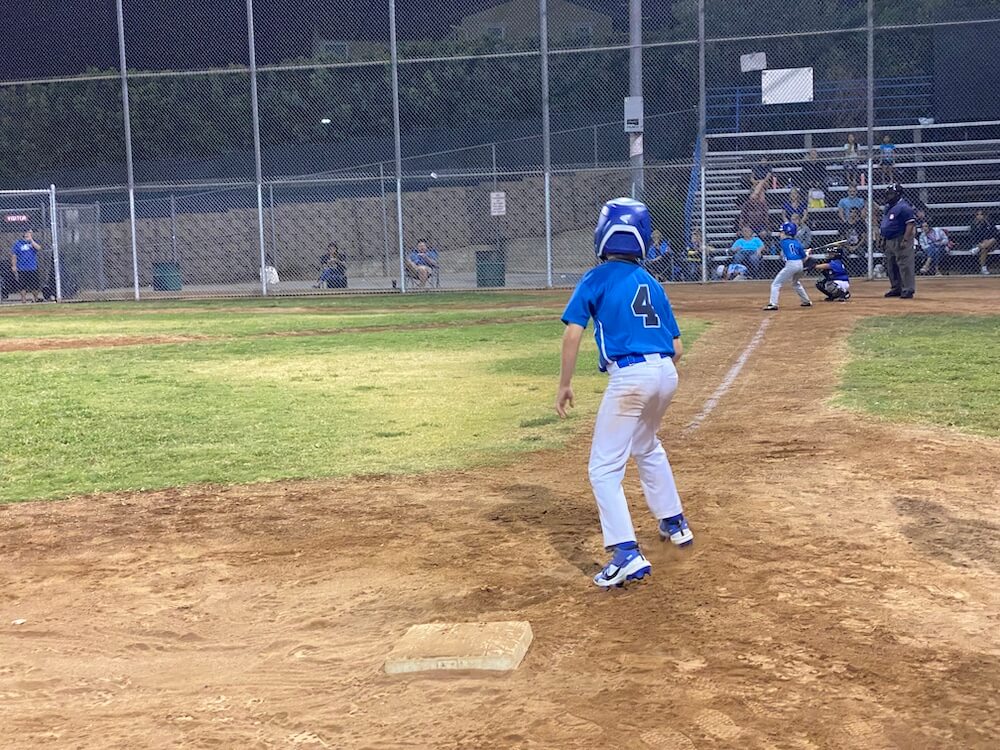How to Slide in Baseball: Teaching Kids Early and Why It Matters

Sliding is one of the most overlooked but essential skills in little league baseball. Sure, there’s a lot of focus on hitting, pitching, and even fielding – but when it comes down to it, sliding can make or break a close play at second, third, or home.
Sliding is Important
Early little league games often turn into walk-and-steal fests, where base running feels more like a merry-go-round of jogs to the next base because pitchers and catchers are still finding their rhythm. And hey, that’s all part of the fun (and frustration) of early-season games. But as kids get older and plays get tighter, sliding becomes a necessary part of staying safe on the basepaths and avoiding outs.
In little league, there’s even a rule that can call runners out if they don’t slide during a close play. Coaches and parents often forget that sliding isn’t just flashy; it’s a skill that keeps players safe from injury and helps avoid collisions. Teaching kids to slide properly not only prevents unnecessary outs but also prevents scrapes, bruises, and worse.
Sliding can be a game-changer, but it also comes with its fair share of dirt-stained pants. Here’s why baseball pants were made to get dirty—and why that’s a good thing.
How to Teach Kids to Slide (Without Fear or Injury)

Sliding for the first time can be scary for young players. Some are hesitant to dive toward the ground, and understandably so! Here’s how to introduce sliding in a way that’s fun, safe, and effective:
- Get their buddies in on it: There's nothing like having fiends around to help get over the initial fear of throwing yourself onto the ground. Watching others do it and survive will help even the super scared ones give it a try.
- Start with Sliding Shorts: Before kids ever hit the dirt, make sure they have sliding shorts. These padded compression shorts protect their hips and thighs from burns and bruises.
- Use Cardboard (Yes, Seriously): Grab a large cardboard box from UHAUL or another moving company. Flatten it out and lay it on the grass. Have kids practice sliding on it like they’re at a slip-and-slide. The cardboard reduces friction and helps them get the feel of sliding without risking scrapes.
- Break it Down Step by Step:
- Start with the form. How to slide with one leg under and the hands up high.
- Gradually have them jog and slide. Try it without cleats at first so they don't get caught, especially when using cardboard.
- Finally, introduce a full sprint-to-slide drill.
- Rinse and repeat. A LOT.
- Incorporate it Early in the Season: Don’t wait until mid-season to teach sliding. It should be one of the first things you practice so kids get comfortable with it. The earlier they learn, the more natural it will become.

WikiHow: How to Slide in Baseball
WikiHow Link to a great how-to.They actually do a great job of breaking it down. Focus on the form. Sit in the position for a long time. Take off the cleats. They also have some great specialty slide stuffs.
Teaching kids to slide is about more than technique—it’s about embracing failure and taking chances. That’s why I always tell my players: Dare Mighty Things.
Sliding: A Quick Word of Caution
Little League rules generally prohibit headfirst sliding. This is to prevent head and neck injuries. Stick to feet-first slides, especially for younger players. Reinforce this regularly during practice to build good habits.
Through First Base: Harder Than It Looks
Another often-overlooked aspect of base running is knowing when to run through the bag at first base versus when to round the corner. Many kids instinctively slow down as they approach first, but teaching them to sprint full speed through the base is critical. The key is:
- Run Through First on Ground Balls: No need to round the bag if the play is close. Full speed, right past the base.
- Round the Bag on Hits to the Outfield: Teach kids to take a banana-shaped path as they approach first, allowing them to be in a position to keep running to second if the ball gets away.
- Be Ready to Slide at Second and Beyond: If they’re rounding for second or third, they should already have the instinct to slide if there’s a play at the base.
The Bottom Line
Sliding isn’t just a flashy move to show off during games – it’s a critical part of little league that can save outs, prevent injuries, and build confidence. By teaching sliding early and making it a regular part of practice, you set kids up for success. And who knows? You might just save them from the dreaded walk-and-steal game losses that tend to plague early little league seasons.
So grab that cardboard, dust off the sliding shorts, and get to work. Parents: expect dirty and ripped pants, that's baseball. Did I mention that sliding is super cool? Just watch Trea Turner.

Back to Home